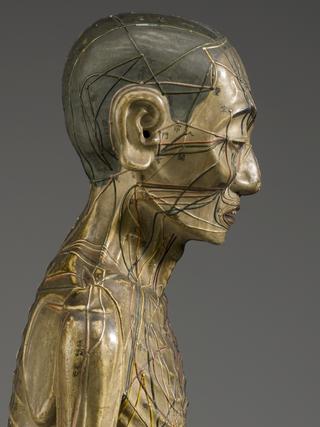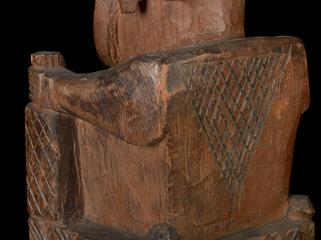






Two packets, each containing one hundred adhesive gold (kinryu) points, used during long-term stimulation during acupuncture therapy, from the surgery of a British practitioner c.1996, unsigned, Japanese, 1980-1985.
Each of these two packets contains 100 adhesive gold (‘kinryu’) points. They are used for long-term stimulation during acupuncture therapy. In Traditional Chinese Medicine (TCM), certain points on the skin are stimulated by the application of needles, massage rollers or adhesive pressure points such as these. The aim is to unblock the flow through the body of a life force known as qi (chi). TCM practitioners believe qi is essential to wellbeing. These kinryu points were manufactured in Japan. A British TCM practitioner donated them to the Science Museum.
Details
- Category:
- Asian Medicine
- Object Number:
- 2002-449
- Measurements:
-
overall (each pack): 78 mm x 130 mm .01kg
- type:
- acupuncture points
- credit:
- Kelley, R.




